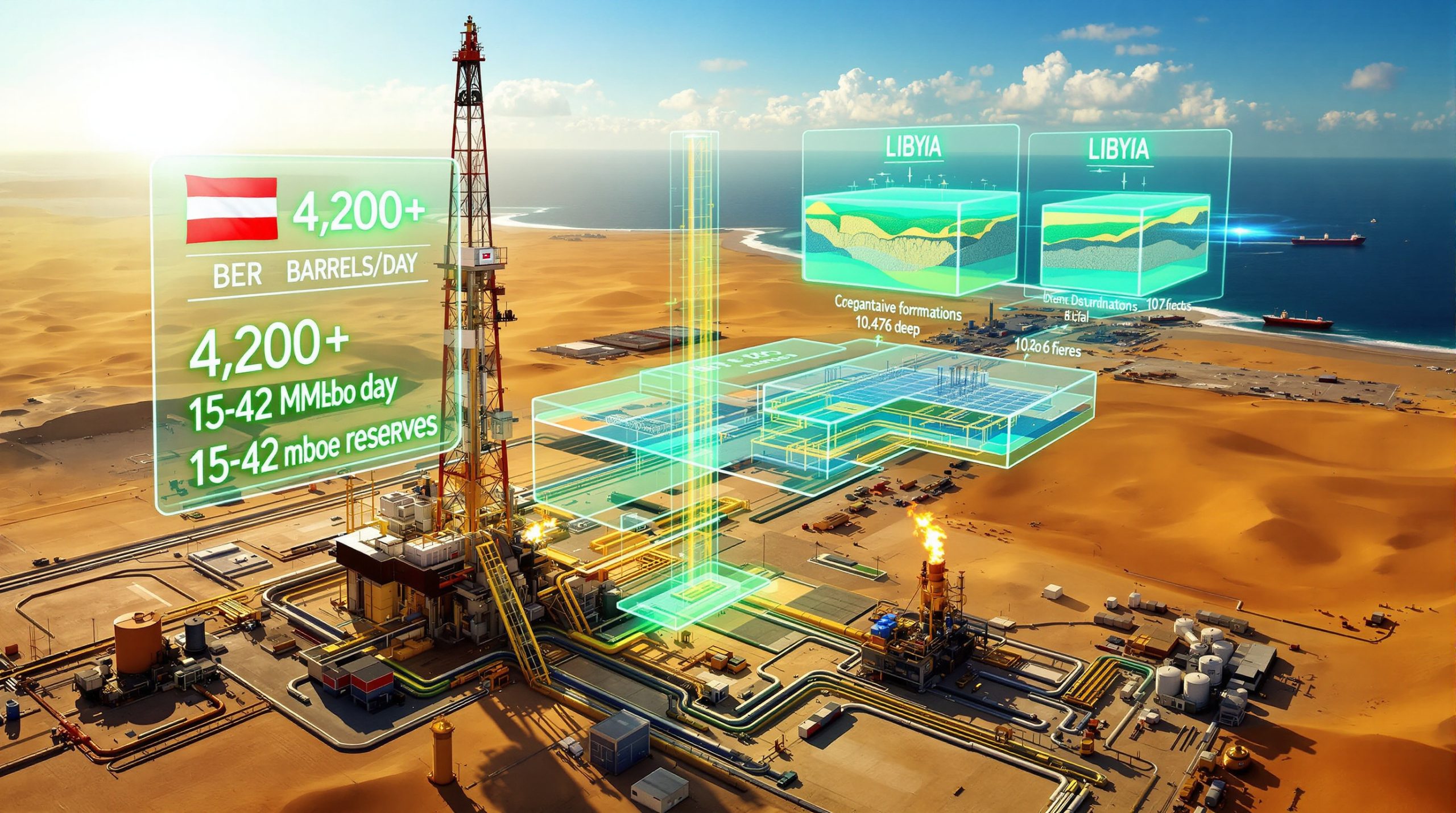Copper Price Forecast: Will Prices Hit $12,000 Per Ton in 2025-2026?
The copper market is approaching a critical juncture as prices hover near record territory in October 2025. Currently trading around $10,900 per ton, copper has demonstrated remarkable resilience despite global economic uncertainties, gaining over 15% year-over-year. This comprehensive analysis examines whether copper will break through to new all-time highs in the coming months, potentially reaching the $12,000 per ton threshold that leading industry experts are forecasting.
Current Market Dynamics
Copper's impressive performance comes amid a complex interplay of supply constraints and growing demand from the energy transition sector. The metal has surged toward all-time highs primarily due to widespread supply disruptions, with prices recently coming within $600 of breaking the record high of approximately $11,100 per ton set earlier in 2025.
Market volatility has increased in recent weeks, particularly after President Trump announced potential additional 100% tariff impacts on copper in early October. Despite this temporary cooling effect, copper prices have maintained their elevated position, reflecting the market's focus on fundamental supply tightness rather than short-term policy fluctuations.
Supply Disruptions Creating Market Tightness
The copper market has experienced significant supply-side challenges throughout 2025. A wave of accidents and operational issues at major mines in Chile, the Democratic Republic of Congo (DRC), and Indonesia has severely constrained global output at critical moments.
These disruptions have prevented the market from building anticipated inventories, effectively offsetting what analysts had previously forecasted as a potential surplus year. The persistence of these operational challenges suggests that supply constraints may continue to provide price support through early 2026.
In Chile, which accounts for approximately 28% of global copper supply forecast, labor disputes and technical difficulties at several major operations have reduced output expectations. Similar issues in the DRC and Indonesia have compounded the global supply shortfall, with mining companies struggling to meet production targets despite high price incentives.
What Are Expert Price Predictions for Copper Through 2026?
Bullish Forecasts from Industry Veterans
Leading industry figures have presented decidedly optimistic outlooks for copper prices through the end of 2025 and into 2026.
Kenny Ives, chief commercial officer at Chinese copper and cobalt producer CMOC Group and CEO of its trading arm IXM, projects copper prices potentially reaching $11,000-$12,000 per ton before the end of 2025. During the London Metal Exchange (LME) Week summit in October 2025, Ives described himself as "nice and bullish" on copper's prospects.
This positive sentiment carries particular weight as Ives, once a contender for the top position at Glencore Plc, rarely offers public market views. His optimistic stance signals confidence despite recent price volatility stemming from escalating U.S.-China trade tensions.
Nick Snowdon, head of metals research at Mercuria Energy Group and a well-known copper bull, has echoed this positive stance. Speaking at the same industry event, Snowdon suggested prices could "quite easily" reach $12,000 per ton, representing a potential 10% increase from current levels.
Institutional Analyst Projections
Financial institutions present a somewhat more measured outlook, though forecasts have been trending higher throughout 2025:
-
BMI (Fitch Solutions): Recently raised its 2025 average copper price forecast to $9,650 per ton, up from its previous estimate of $9,500, citing resilient demand and persistent supply disruptions
-
Trading Economics: Projects copper prices to reach approximately $11,900 per ton by late 2026
-
Investment Banks: Several major banks maintain price targets in the $9,000-$10,000 range for 2025-2026, with bull case scenarios extending to $15,000 if supply constraints persist and energy transition demand accelerates
The disparity between bullish industry insiders and more conservative bank analysts highlights the uncertainty surrounding both supply recovery timelines and the pace of demand growth.
Long-Term Price Trajectory
The consensus among analysts points to sustained strength in copper prices through 2026, with most forecasts placing the metal in the $10,000-$12,000 per ton range. The potential for new record highs remains contingent on several factors:
- The severity and duration of ongoing supply disruptions
- The pace of energy transition investments globally
- China's economic performance and infrastructure spending
- The evolution of U.S.-China trade relations under the Trump administration
Notably, even the more conservative copper price insights represent historically strong levels for copper, suggesting widespread agreement that structural support for prices will persist.
How Are Global Supply Dynamics Shaping the Market?
Mine Production Challenges
Despite projections of increased global copper output at the beginning of 2025, actual production has consistently underperformed expectations throughout the year. Several factors contribute to this underperformance:
- Declining ore grades at mature mining operations, particularly in Chile and Peru
- Technical difficulties at major projects, resulting in unplanned maintenance shutdowns
- Regulatory hurdles and community opposition delaying new developments
- Weather-related disruptions affecting production schedules
- Labor disputes at key operations in South America
CMOC Group, which operates two copper-cobalt mines in the DRC, has firsthand experience with the operational challenges facing producers. The fact that Kenny Ives maintains a bullish outlook despite CMOC's exposure to disrupted regions suggests the company views supply constraints as likely to persist.
Processing Capacity Expansions
While mine supply has faced constraints, refined copper production capacity has expanded, particularly in China. New smelters and refineries have increased global processing capabilities, though their utilization depends on concentrate availability.
This dynamic creates periods where refined copper markets can quickly shift between surplus and deficit conditions based on concentrate flow disruptions. Treatment charges, which miners pay smelters to process their concentrate, have fluctuated significantly throughout 2025, reflecting this tension between processing capacity and mine output.
Strategic Reserves and Inventory Management
Copper inventories on major exchanges have fluctuated significantly throughout 2025. Low visible inventory levels have periodically triggered price spikes, while strategic releases from China's State Reserve Bureau have occasionally tempered rallies.
This inventory management aspect adds another layer of complexity to price forecasting, as government policy decisions regarding strategic reserves can temporarily offset physical market tightness. However, with exchange inventories generally remaining below historical averages, the market remains vulnerable to supply shocks.
What Role Does China Play in Copper's Price Direction?
Manufacturing and Construction Demand
China remains the dominant force in global copper consumption, accounting for over 50% of worldwide demand. The country's manufacturing sector, particularly in electronics and electrical equipment, continues to drive substantial copper usage despite economic headwinds.
Chinese copper consumption patterns provide critical signals for global price direction. While overall economic growth has moderated, copper-intensive sectors have shown resilience, particularly those aligned with strategic priorities like renewable energy and electric transportation.
Infrastructure Investment Initiatives
China's ongoing infrastructure development programs, including renewable energy projects and grid modernization, create significant copper demand. Policy shifts toward greater infrastructure spending have historically correlated with copper price rallies.
Recent government announcements regarding infrastructure investment have supported copper prices despite concerns about the broader Chinese economy. These targeted spending programs often prioritize electricity transmission, renewable energy, and transportation—all copper-intensive sectors.
Property Sector Influence
The troubled Chinese property sector has been a counterbalancing force to otherwise strong copper demand. Housing construction activities, a major source of copper consumption, have remained subdued in 2025.
Any policy-driven revival in this sector could significantly boost copper demand and prices. Analysts closely monitor policy announcements related to property market support, as these could signal additional copper demand not currently factored into price forecasts.
Import Patterns and Premiums
Chinese copper import premiums—the additional amount buyers are willing to pay above exchange prices—serve as a key indicator of real demand. These premiums have shown strength in late 2025, suggesting robust physical market conditions despite macroeconomic concerns.
The persistence of high import premiums indicates that Chinese consumers are actively securing physical metal, potentially in anticipation of future supply constraints or price increases. This behavior supports the bullish case for copper price forecast through 2026.
How Is the Energy Transition Reshaping Copper Demand?
Electric Vehicle Manufacturing Requirements
The accelerating production of electric vehicles represents a structural shift in copper demand. Each electric vehicle requires substantially more copper than conventional vehicles:
- Average internal combustion engine vehicle: 20-25 kg of copper
- Average battery electric vehicle: 60-80 kg of copper
- Electric buses and commercial vehicles: Up to 370 kg of copper
This intensity differential means that even modest EV market share gains translate into significant additional copper demand. With major automotive manufacturers accelerating their electrification timelines, this demand growth appears increasingly structural rather than cyclical.
Renewable Energy Infrastructure
Wind and solar power installations continue to drive copper demand growth:
- Offshore wind farms require up to 9.5 tons of copper per megawatt
- Solar photovoltaic systems use approximately 5 tons of copper per megawatt
- Associated transmission infrastructure adds further copper requirements
Global renewable capacity additions have consistently exceeded forecasts in recent years, creating additional copper demand beyond what was projected in earlier market analyses. This trend appears likely to continue as renewable energy economics improve and policy support strengthens.
Grid Modernization Projects
The global push to upgrade aging electrical grids and expand capacity to accommodate renewable energy sources creates additional copper demand. Smart grid technologies, energy storage systems, and charging infrastructure all require significant copper inputs.
In mature economies, grid infrastructure replacement and upgrades represent a major source of copper demand. Meanwhile, in developing economies, the expansion of basic electricity access creates new copper consumption that may persist for decades.
The global shift to electrifying copper demand is set to underpin rising copper prices—triggering forecasts of looming shortages later this decade. This structural demand growth occurs independently of typical economic cycles, potentially changing copper's traditional role as a purely cyclical commodity.
What Geopolitical Factors Could Impact Copper Prices?
Trade Tensions and Tariffs
Escalating trade disputes, particularly between the United States and China, pose risks to copper prices. Recent threats by President Trump of additional 100% tariffs on Chinese goods have temporarily dampened price momentum, highlighting the market's sensitivity to trade policy developments.
Trade friction can impact copper through multiple channels:
- Reduced economic growth and manufacturing activity
- Disrupted supply chains for copper-intensive products
- Changed trade flows and inventory positioning
- Increased hedging and speculative positioning
The market's reaction to the October 2025 tariff threat demonstrates that geopolitical developments can create short-term price volatility, even amid tight supply fundamentals.
Resource Nationalism Trends
Producer countries are increasingly seeking greater control and benefits from their mineral resources. This trend manifests in higher taxation, stricter environmental regulations, and requirements for local processing—all factors that can constrain supply and support prices.
Recent policy changes in Latin American copper-producing countries have created additional uncertainty about future supply growth. These measures range from increased royalties to more stringent permitting requirements, potentially extending development timelines and raising production costs.
Regional Production Risks
Political instability in key copper-producing regions creates periodic supply concerns:
- Chile: Labor disputes and water access issues continue to challenge operations
- DRC: Governance challenges and infrastructure limitations constrain production potential
- Peru: Community opposition to mining projects has delayed several major developments
- Indonesia: Evolving export and processing regulations have created uncertainty for producers
These regional risks tend to be priced into the market inconsistently, creating potential opportunities for traders who closely monitor political and operational developments in key producing regions.
What Technical Indicators Are Copper Traders Watching?
Price Support and Resistance Levels
Technical analysts identify several key price levels that could influence copper's trajectory:
- Major resistance around $11,100 per ton (the all-time high set earlier in 2025)
- Support established near $9,800-$10,000 per ton
- Secondary support around $9,500 per ton
The metal's repeated approaches toward record territory in 2025 have established a clear resistance zone that many traders believe will eventually be broken if fundamental supply constraints persist.
Market Positioning and Sentiment
Speculative positioning in copper futures provides insights into market sentiment. Recent data shows hedge funds and other financial investors maintaining substantial long positions, reflecting confidence in copper's upward potential despite short-term volatility.
The current positioning suggests that many financial participants share the bullish outlook expressed by industry veterans like Ives and Snowdon. However, this positioning also creates risk of short-term liquidation should economic data disappoint or supply conditions unexpectedly improve.
Correlation With Other Assets
Copper's traditional correlation with equity markets and risk assets has evolved in 2025, with the metal occasionally demonstrating independent strength during broader market downturns. This changing correlation pattern reflects copper's dual role as both an economic barometer and a critical energy transition metal.
The partial decoupling from traditional correlations suggests growing recognition of copper's structural demand story, potentially providing support during economic slowdowns that would historically have pressured prices more significantly.
How Might Supply-Demand Balances Evolve Through 2026?
Short-Term Market Balance Projections
Industry forecasts for the copper market balance show divergent views:
- The International Copper Study Group (ICSG) projects a potential surplus of 289,000 tons in 2025
- Several investment banks anticipate a more balanced market or slight deficit due to ongoing supply disruptions
- The consensus view suggests any surplus will be smaller than initially expected
These divergent forecasts reflect the uncertainty surrounding both production recovery timelines and the pace of demand growth. The actual balance outcome will significantly influence price direction in early 2026.
Medium-Term Deficit Concerns
Looking toward 2026 and beyond, structural supply challenges become more pronounced:
- Few major new mining projects scheduled to enter production
- Declining ore grades at existing operations
- Growing demand from energy transition applications
- Limited exploration success in recent years
This combination of factors has led many industry observers to predict a sustained period of market deficits beginning in 2026 or 2027, providing fundamental support for elevated price levels.
Inventory Cycle Implications
Copper inventory cycles typically influence price movements. The projected path suggests:
- Current low inventory levels supporting prices through early 2026
- Potential inventory rebuilding phase if production normalizes
- Long-term inventory constraints as structural deficits emerge
Historical analysis suggests that sustained price rallies often coincide with inventory drawdowns, while periods of inventory rebuilding can temporarily pressure prices even in structurally tight markets.
What Are the Key Price Risks and Opportunities for Investors?
Downside Risks to Monitor
Several factors could pressure copper prices below current forecasts:
- Global economic slowdown reducing industrial demand
- Chinese property sector deterioration
- Faster-than-expected resolution of mining disruptions
- Trade tensions escalating into broader economic impacts
A severe global recession would likely trigger at least a temporary price correction, though energy transition demand might provide a higher floor than in previous economic downturns.
Upside Catalysts
Conversely, several developments could drive prices toward or beyond record levels:
- Accelerated energy transition investments
- Sustained production disruptions at major mines
- Chinese stimulus measures boosting infrastructure spending
- Stronger-than-expected global manufacturing recovery
The combination of persistent supply constraints and accelerated energy transition spending could create conditions for a significant price rally, potentially pushing copper well beyond the $12,000 per ton level suggested by industry veterans.
Investment Implications
For investors considering exposure to copper:
- Mining equities offer leveraged exposure to price movements
- ETFs tracking copper prices provide more direct commodity exposure
- Futures contracts allow sophisticated investors to implement specific strategies
- Downstream manufacturers face margin pressures from sustained high prices
The optimal approach depends on investor risk tolerance, time horizon, and views on both copper price direction and broader market conditions.
What Long-Term Structural Changes Are Reshaping the Copper Market?
Resource Depletion Concerns
The copper industry faces long-term challenges in replacing depleted reserves:
- Average ore grades have declined from approximately 1.6% to 0.7% over the past century
- Discoveries of high-quality deposits have become increasingly rare
- Development timelines for new mines have extended to 15+ years in many jurisdictions
These structural challenges suggest that even if copper prices incentivize new exploration and development, the supply response may be both slower and smaller than in previous price cycles.
Technological Innovation in Mining
Technological advancements are helping address some supply challenges:
- Autonomous equipment improving operational efficiency
- Advanced processing techniques enabling extraction from lower-grade ores
- Leaching technologies expanding to primary sulfide ores
- Digital optimization reducing operational disruptions
While these innovations can incrementally improve existing operations, they are unlikely to fully offset the challenges of declining grades and increasingly complex ore bodies without significantly higher prices.
Recycling's Growing Importance
Secondary copper production from recycled sources is gaining prominence:
- Currently accounts for approximately 30% of global copper supply
- Technical limitations on increasing this percentage in the short term
- Improving collection systems gradually expanding the recycling contribution
Recycling will likely play an increasingly important role in the copper market, but technical constraints and the long lifecycle of many copper applications limit its ability to fully address potential primary supply shortfalls.
FAQ: Copper Price Forecast and Market Outlook
Will copper prices reach new all-time highs in 2026?
Many analysts believe copper has a strong chance of setting new price records by 2026, potentially exceeding $12,000 per ton if supply disruptions persist and energy transition demand accelerates. However, this outcome depends on global economic conditions remaining supportive and Chinese demand maintaining strength.
The bullish case is supported by ongoing supply disruptions and structural demand growth from energy transition applications. The bearish case centers on potential economic slowdowns and faster-than-expected supply recovery.
How does copper price volatility impact mining investments?
Price volatility creates both challenges and opportunities for mining investments. While higher average prices improve project economics, volatility complicates investment decisions and financing arrangements. Companies with low-cost operations and strong balance sheets are better positioned to weather price fluctuations.
Mining companies must evaluate projects against a range of potential price scenarios, with most now using conservative long-term price assumptions while recognizing the potential upside from structural demand growth.
What role does copper play in the global energy transition?
Copper is essential to virtually all aspects of the energy transition, from renewable generation to electrified transportation and grid modernization. The International Energy Agency estimates that achieving net-zero emissions targets would require copper demand for clean energy technologies to more than double by 2040.
This growing role in the energy transition may fundamentally change copper's market dynamics, with demand becoming less cyclical and more driven by policy and climate goals than traditional economic cycles.
How do copper futures markets influence physical metal prices?
Futures markets provide price discovery and risk management tools for the copper industry. While speculative activity can temporarily drive price movements, physical market fundamentals ultimately determine sustainable price levels. The relationship between futures and physical premiums offers insights into real supply-demand conditions.
Changes in futures market regulations, participant behavior, or exchange rules can influence short-term price discovery, but lasting price trends reflect underlying physical market conditions.
What impact would a global recession have on copper prices?
A global recession would likely pressure copper prices downward in the short term as industrial demand contracts. However, the magnitude of decline might be less severe than in previous downturns due to structural support from energy transition applications.
Government infrastructure stimulus programs often target copper-intensive sectors during economic recoveries, potentially creating a faster rebound than in previous cycles. The growing portion of demand tied to energy transition may also provide support during economic weakness.
Ready to Capitalise on the Next Mineral Discovery?
Discovery Alert's proprietary Discovery IQ model delivers instant notifications on significant ASX mineral discoveries, offering investors an immediate edge in markets like copper. Explore historic returns from major mineral discoveries on our dedicated discoveries page and position yourself ahead of the market.




